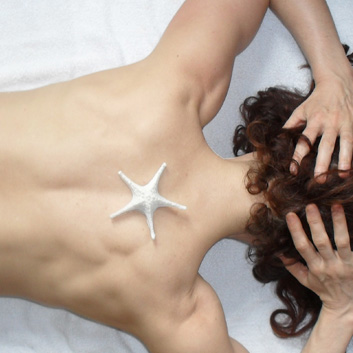Connecting with the Body’s Power to Heal
Craniosacral therapy is a gentle touch therapy that brings deep relaxation and rejuvenation to both body and mind.
This therapy utilizes the physiological rhythm that comes from the movement of the cerebrospinal fluid creating various pressures on cranial bones and along the spine.
Craniosacral therapy manifests significant changes in the mind-body system by its’ immediate contact with the central nervous system.
During a session the receiver may remain fully clothed as the CST therapist uses a light touch for the release of restrictive patterns held in the body. Though the therapist may facilitate direct releases, their primary focus is to follow the movement of the body’s tissues and monitor the rhythm in order to support the body’s natural mode of self- healing. Honouring the wisdom of the body.
Craniosacral therapy can benefit the body in numerous ways due to its influence on the central nervous system. Results vary from increased physical mobility, pain relief and deep relaxation. And it is a wonderful healing technique to add into a massage session.
Somatic Emotional Release (SER)
SER opens up the connection of an internal dialogue within the body for the person on the table who intends to drop into a deeper release of stuckness, and pain in the body.
Vocal expression of body imagery and sensation through a sharing process in word and sound with Onyx gives voice to the intelligence of the body’s tissues. The intention of SER provides the opportunity to express mental and emotional pain in order to free the body of physical imbalances and discomfort, while arriving at a greater understanding of ones inner landscape.
Over the years I have studied Craniosacral therapy with the Upledger Institute and along with some prominent Canadian teachers. On numerous occasions, I have been a teacher assistant for Robert Harris at the Cranial Centre in Toronto.
Some conditions treated include:
| Migraines and headaches | Chronic Ear infections | TMJ dysfunction |
| Chronic neck/back pain | Tinnitus | Sports injuries |
| Anxiety | Surgery preparation/recovery | Traumatic physical injuries |
| Emotional trauma/difficulties | Autism |

